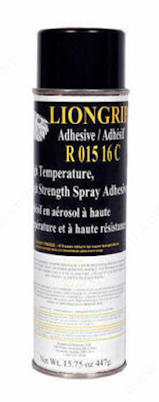You will
come across different types of adhesives right now to select from. However,
with so many of them available on the market it can be quite difficult to
choose the right one for your personal requirements. For some surfaces, it will
be a sensible idea to go for contact cement spray since it can prove to be an effective bonding material in the
long run.
Contact
adhesive or contact cement happens to be a neoprene rubber adhesive providing a
flexible, fast, and permanent bond. Although we can use it for virtually
anything, it is particularly useful for nonporous materials which other
adhesives cannot glue together. We can use contact cement for bonding large
surfaces like countertops in bathrooms and kitchens. These are extremely
effective on rubber, plastics, veneers, metal, glass, as well as leather.
In what way is contact cement used?
It will
be imperative to apply the contact cement to each surface while bonding 2
objects together. Contact cement will be functional when it becomes completely
dry, and the seal is permanent once the surfaces become bonded. Following this,
it will create a stronger bond with the removal of excess air with the help of
clamps or rollers.
These
adhesives are usually used with countertops, laminates, and wooden structures.
They function best on nonporous substrates and are used in the manufacturing
and construction industries on a wide scale.
Benefits of using contact cement
One
significant problem that comes with most adhesives is the fact that they take a
long time to dry. On the other hand, a contact
cement spray is going to become dry within a couple of hours only. There is
not much to clean up and not much residue will be leftover since these
adhesives become completely dry before bonding.
The
primary benefit of using contact cement over other adhesives is the fact that
they are able to form strong and permanent bonds right after contact. This bond
is going to become permanent and one can apply this with the help of a roller,
spray, or brush. Apart from this, contact cement is also available as
water-based and solvent-based compounds, which makes it appropriate for
companies to use according to their requirements.
Unlike
other adhesives, contact cement does not need a specific level of pressure or
temperature for forming the bond. One does not need to perform much work after
the surfaces become joined since the adhesive becomes already dry.
Advantages of contact cement at a
glance
• Resists voltage spikes
• Better shear strength
• Proper adhesion to different
non-porous materials
• Simple application process for the
contact cement which can be done by anybody out there
• Appropriate for bonding vinyl,
carpets, leather, rubber, cardboard, as well as soft fabrics
• Repositionable and flexible up to 90
seconds following gluing
Conclusion
Even
though there are certain drawbacks while making use of contact cement such as
inadequate tensile strength as well as a lack of gap-filling properties, the
benefits of this adhesive clearly outshine the negative aspects. And the good
thing is that this will be able to endure rapid changes in temperature,
vibration, as well as moisture. Therefore contact cement is used by lots of
commercial companies across the globe right now.

Comments
Post a Comment